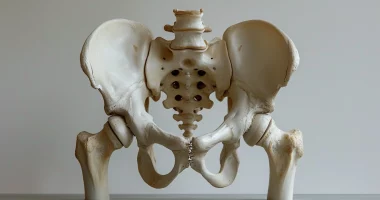Intracranial hematoma
Definition
Intracranial hematoma is a limited accumulation of blood in the brain’s substance with a compressive, displacing, and damaging effect on nearby brain tissue. An intracerebral hematoma is clinically characterized by general cerebral and focal symptoms, which depend on the location of the hematoma and its volume. An intracerebral hematoma is most reliably diagnosed by the combined use of CT and MRI of the brain and the angiographic study of cerebral vessels. Small intracerebral hematoma can be treated conservatively, and large intracerebral hematoma can be treated surgically by removal or aspiration.
General information
Intracerebral (intraparenchymal) hematoma is characterized by the accumulation of blood in the brain parenchyma. It is more often of posttraumatic origin. In the structure of all intracranial hematomas, intracerebral hemorrhages account for about 30%. Several times more often, it is diagnosed in men. The age peak falls on the young working age – from 35 to 50 years. They represent a serious danger due to the severity of developing cerebral disorders and a high percentage of mortality.
Causes
Depending on the genesis, intracranial hematomas can be posttraumatic and non-traumatic. Intracerebral hematoma can be formed as a result of:
- Traumatic brain injury. Most often, the outpouring of blood is facilitated by cerebral vessel rupture at the time of craniocerebral trauma or posttraumatic diapedesis in a contusion site.
- Cerebral vascular abnormalities. The immediate cause is a ruptured cerebral aneurysm or arterio-venous malformation.
- Arrosive bleeding. Destruction of the vascular wall can develop in an intracerebral tumor due to an excessive increase in intravascular pressure in arterial hypertension and/or impaired elasticity of the vascular wall in atherosclerosis, systemic vasculitis, diabetic macroangiopathy, etc.
- Changes in blood properties. Intracerebral hematoma may be associated with changes in reagologic properties of blood in hemophilia, leukemia, liver disease (chronic hepatitis, cirrhosis), treatment with anticoagulants, etc.
Classification
To date, clinical neurology uses several classifications of intracerebral hematomas, giving an idea of their different characteristics: location, size, and etiology. Depending on the localization, central, subcortical, and cortico-subcortical intracerebral hematoma and cerebellar hematoma are distinguished. There are lobar, medial, lateral, and mixed intracerebral hematomas. Based on size, intracerebral hematoma can be classified as:
- small (up to 20 ml, CT diameter less than 3 cm)
- medium (20-50 ml, CT diameter 3-4.5 cm)
- large (>50 mL, CT diameter >4.5 cm).
The cause of intracerebral hematoma can be posttraumatic, hypertensive, aneurysmal, tumor, etc. Posttraumatic hematoma is classified according to the time of its occurrence. Primary intracerebral hematoma is formed immediately after traumatic injury, delayed intracerebral hematoma – in a day or more.
Symptoms of an intracerebral hematoma
Cerebral symptoms
In most cases, intraparenchymal hematoma is accompanied by pronounced general cerebral symptoms. Patients experience dizziness, intense headaches, nausea, and vomiting. More than half of cases of intracerebral hematoma are characterized by impaired consciousness from sopor to coma. Sometimes, the depression of consciousness is preceded by a period of psychomotor agitation. The formation of intracerebral hematoma may occur with an obliterated lucid interval in the patient’s condition, with a longer lucid interval, or without it.
Focal symptoms
The focal symptomatology of intracerebral hematoma depends on its volume and localization. Thus, small hematomas in the area of the internal capsule have a more pronounced neurological deficit than much larger hematomas localized in less functionally significant areas of the brain. Most often, intracerebral hematoma is accompanied by hemiparesis, aphasia (speech disorder), sensory disturbances, non-symmetry of tendon reflexes of right and left limbs, and convulsive epileptic seizures. Anisocoria, hemianopsia, frontal symptoms, critical and memory impairment, and behavioral disorders may be observed.
Diagnosis
Modern neuroimaging methods allow the diagnosis of intracerebral hematoma and the identification of the cause of its appearance. The leading diagnostic methods are:
- CT scan of the brain. As a rule, intracerebral hematoma on CT scans appears to be a homogeneous density foci with a round or oval shape. If the hematoma was formed due to a brain contusion, it usually has an irregular contour. Over time, there is a decrease in the density of the hematoma, which corresponds to the density of brain tissue. This period is 2-3 weeks for small and medium-sized hematomas, up to 5 weeks.
- MRI of the brain. When the density of the hematoma decreases, MRI can better visualize the hematoma, although, in the initial period, MRI may lead to a misdiagnosis in favor of a tumor with hemorrhage. Therefore, when available, many neurologists and neurosurgeons prefer to use both CT and MRI during diagnosis.
- Cerebral angiography. Cerebral angiography, or magnetic resonance angiography (MRA), is used to detect vascular disorders caused by reflex angiospasm and diagnose aneurysms and arterio-venous malformations. Angiography cannot be used alone to diagnose intracerebral hematoma because it does not accurately differentiate the area of brain contusion from the hematoma.
Intracerebral hematoma should be differentiated from a brain tumor, brain contusion, ischemic stroke, cyst, and brain abscess.
Treatment of intracerebral hematoma
Conservative therapy
Intracerebral hematoma can be treated conservatively or surgically. The neurosurgeon usually decides on the choice of treatment tactics. Conservative therapy under CT scanning is possible if the diameter of the intracerebral hematoma is up to 3 cm, the patient’s consciousness is satisfactory, and there is no clinical evidence of dislocation syndrome and compression of the medulla oblongata. Hemostatics and drugs that reduce vascular permeability are administered as part of conservative therapy.
Neurosurgical treatment
The large diameter of intracerebral hematoma, pronounced focal symptoms, and impaired consciousness are indications for surgical treatment. The presence of signs of brainstem compression and/or dislocation syndrome is a reason for urgent surgical intervention:
- Transcranial removal. It is the operation of choice for hematomas of various localizations and sizes.
- Endoscopic evacuation. Less traumatic method of surgical treatment of intracerebral hematoma. It is used if technically possible.
- Stereotactic aspiration. Applicable for small hematomas accompanied by significant neurologic deficits.
In the case of multiple hematomas, often only the largest hematoma can be removed. If an intracerebral hematoma is combined with a sheath hematoma of the same hemisphere, it should be removed with the subdural hematoma. It may not be removed if a small to medium-sized intracerebral hematoma is located on the other side of the sheath hematoma.
All these treatment options are available in more than 630 hospitals worldwide (https://doctor.global/results/diseases/intracranial-hematoma). For example, Craniotomy can be performed in these countries for following approximate prices:
Turkey $11.3 K in 30 clinics
Israel $17.1 K – 23.0 K in 12 clinics
China $23.2 K in 6 clinics
Germany $31.8 K in 33 clinics
United States $70.3 K in 15 clinics.
Prognosis and prevention
The main factors that determine the prognosis include the size and location of the hematoma, the patient’s age, the presence of concomitant pathology (obesity, hypertension, diabetes mellitus, etc.), the degree and duration of impaired consciousness, the combination of intracerebral hematoma with shell hematomas, the timeliness, and adequacy of medical care. The prognosis is most unfavorable for hematomas bursting into the ventricles of the brain. The leading causes of lethal outcomes are cerebral edema and dislocation. About 10-15% of patients with hemorrhagic stroke die from recurrent hemorrhage, and approximately 70% have persistent disabling neurologic deficits. Prevention consists of preventing head injuries and prophylaxis, as well as timely treatment of cerebrovascular diseases.


